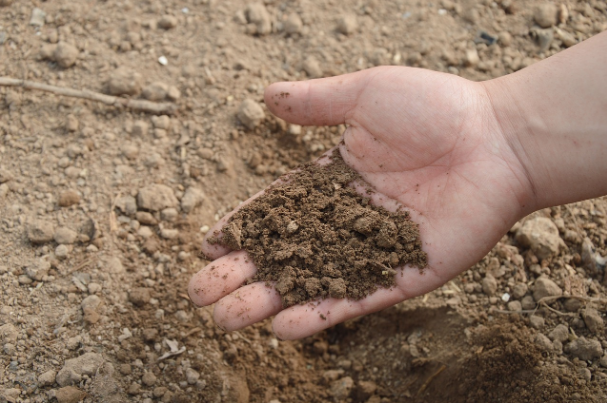The vast majority of people in the world today never give much of a thought to the ground they walk on. Those who do usually only acknowledge how muddy, dry, or filthy it is. Only a few truly appreciate the outsized role that dirt — particularly soil — plays in our lives and all life.
Many of those who do appreciate the soils have great cause for concern in the modern era though. Globally, soils are eroding and disappearing nearly ten-fold faster than they are being created. The loss of quality soils is much more than having to dig deeper for plant crops, rather it is a loss that could completely alter how humans currently live on this planet.
Fortunately, these concerns have spurred broad actions not only in Maryland but across the nation and around the globe to bring greater awareness and appreciation for the soils that we do have. Ultimately, the goal of these efforts is to reduce soil loss on the landscape before it is too late. There is much to be done and everyone can make a difference!
Soil: More than Dirt
The idea that there is a difference between soil and dirt tends to catch a lot of people off guard. But there is a real difference. By definition, dirt is simply broken down rock, completely devoid of many essential nutrients and life. Soil, on the other hand, is teeming with life including but not limited to microbes, insects, bacteria, nutrients, and organic matter — all things that are essential for the growth of plants and life as we know it.
For some of us, this life is fascinating rather than disgusting. Indeed, nearly every young child is interested in playing in the soil and finding things like worms to bake into their mudpies. Studying the things living in our soils has led to numerous interesting discoveries about microbial life, plant ecology, and decomposition among others.
Today, the vast majority of our rich soils are under some sort of threat. These threats come in all shapes and sizes from farming practices to industry and development to the removal of vegetation that holds soils in place, to a failure to replenish soils, and so on. These issues have pushed many to consider choices such as sustainable building materials, alternative farming practices, and preserving coastlines.
The Soil Erosion Problem
In Maryland, all of these soil-reducing factors come into play, but none quite so much as an eroding coastline. Upwards of 69% of Maryland’s coastline is eroding or at risk of eroding according to reports from the Department of Natural Resources. Much of this erosion is due to development along the coast that has removed essential vegetation that captures and holds soils in place.
Without these natural features, tides and large storms can leach away a significant amount of shoreline and also make inlands more vulnerable to things such as salination — where soils become too salty to sustain life. Highly saline soils are just one aspect of erosion that can devastate farmers though. Repeated tilling and plowing — especially if left uncovered by vegetation while fallow — can lead to topsoils eroding as well.
The state of Maryland has recognized some of the other impacts of exposed soils and erosion such as runoff due to heavy rainfall that can lead to sedimentation, a reduction in stream capacity, and eventually more scouring and flooding. High levels of sediment in waterways can have a significant negative impact on freshwater aquatic life. Fortunately, the state has numerous control programs and best practices in place to help address and mitigate some of the risks of erosion.
Making Changes to Reduce Erosion
With all of the large-scale problems associated with soil loss and erosion, it can feel as though there isn’t much that one person or even a small group of people can do. But there is a lot that can be done to help improve soil quality and reduce erosion potential! Even off-the-wall ideas have the potential to make a real difference.
For instance, states like Louisiana are currently using industrial hemp to address issues of contamination in their soils. The process is called phytoremediation which is essentially growing plants that will soak up toxic pollutants in soils. Hemp often gets a bad rap because many people don’t understand the differences between hemp and marijuana, but hemp is a native plant that provides a lot of useful benefits both in a natural setting as well as in an economic one.
Even on a small scale at home, one person can do a lot to improve local soil conditions. Composting most food scraps, cardboard, leaves, cut grass, and other compostable materials created in most homes can create uber-healthy soils in a relatively short time. This soil can be used in home garden plots or simply spread across the yard as a natural fertilizer. If every home in Maryland — or the country — did this, an abundance of healthy soils would be produced every year and a profound amount of material would avoid the landfill (a whole different environmental topic).
***
Even though many people don’t acknowledge it, soil loss and erosion are significant environmental issues currently facing our world today. Without some preventative action, these issues could severely impact human survival through food production and land loss. Fortunately, there are a lot of things that can be done to improve soils and make a real difference in our communities.

Bio: Indiana Lee lives in the Pacific Northwest and has a passion for the environment and wellness. She draws her inspiration from nature and makes sure to explore the outdoors regularly with her family and two dogs. Indiana also has experience in owning and operating her own business. Feel free to follow her on Twitter @indianalee3.

